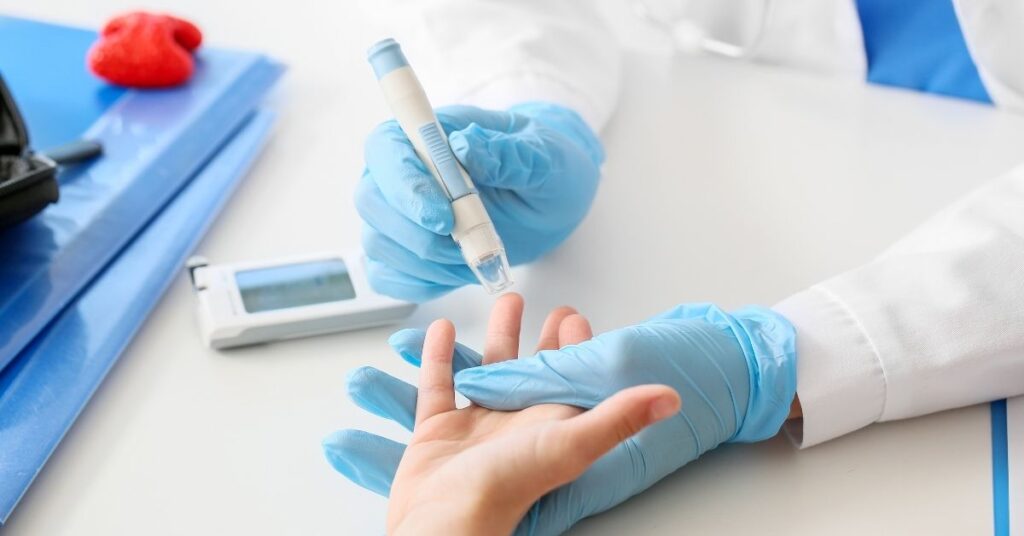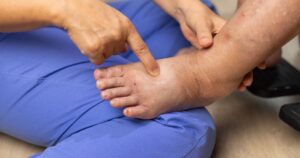Lymphedema can feel like an uninvited guest that overstays its welcome. It’s a condition where excess lymph fluid builds up in tissues, causing swelling, discomfort, and sometimes a sense of heaviness that’s hard to shake. But what’s even more concerning is the risk of infections that can sneak in when lymphedema isn’t managed carefully. Infections like cellulitis can quickly turn a manageable condition into a serious health issue. So, how do you prevent those infections from occurring? It’s not about living in a bubble or obsessing over every little thing. It’s about practical, everyday steps that empower you to take control. This guide explores the prevention of lymphedema-related infections in a conversational tone, offering practical advice and a dose of encouragement to keep you motivated.
Understanding Lymphedema and Its Risks
Lymphedema occurs when the lymphatic system, which functions like the body’s drainage network, becomes blocked or damaged. This can be due to surgery, radiation, injury, or even genetics. The result? Fluid pools in places it shouldn’t, often in the arms or legs, leading to swelling that ranges from mild to severe. But here’s the kicker: that extra fluid creates a perfect breeding ground for bacteria. A tiny cut, scrape, or even a bug bite can cause trouble, leading to infections like cellulitis, which causes redness, pain, and sometimes fever or chills.
Why are infections such a big deal? Because the lymphatic system is also part of your immune defense. When it’s compromised, your body struggles to fight off invaders. Think of it like a city with a broken sewer system—things get messy fast. Preventing infections isn’t just about avoiding discomfort; it’s about protecting your overall health and preventing lymphedema from escalating into a more serious condition.
Why Infections Are More Common with Lymphedema
The science behind this is pretty straightforward. Lymph fluid is rich in proteins, which bacteria love to munch on. When fluid stagnates, it’s like setting out a buffet for microbes. Plus, the swelling stretches your skin, making it thinner and more prone to tiny tears or cracks. These micro-injuries might not even be visible, but they’re enough to let bacteria slip through. Add in a weaker immune response in the affected area, and you’ve got a recipe for trouble.
This doesn’t mean you’re doomed to constant infections. It just means you need to be proactive. Knowing why infections happen is the first step to outsmarting them. It’s like understanding your opponent in a game—you can’t win if you don’t know their moves.
Daily Skin Care: Your First Line of Defense
Your skin serves as the gatekeeper between bacteria and your body, so treating it properly is non-negotiable. A healthy, well-moisturized skin is less likely to crack or tear, which means fewer entry points for germs. But it’s not about slathering on any old lotion and calling it a day. You need a routine that’s gentle, consistent, and tailored to the unique needs of lymphedema.
Start with a mild, fragrance-free cleanser. Harsh soaps can strip your skin of natural oils, leaving it dry and vulnerable. Wash the affected area daily, but avoid scrubbing like you would a rusty pan—gentle is the way to go. Pat dry with a soft towel rather than rubbing, which can irritate sensitive skin. Then, apply a hypoallergenic moisturizer to lock in hydration. Look for products containing ingredients such as ceramides or hyaluronic acid, which help repair the skin barrier. Avoid products with alcohol or strong fragrances, as these can irritate or dry out your skin.
Choosing the Right Moisturizer
Not all moisturizers are created equal. For lymphedema, opt for a thick and emollient product, such as a cream or ointment, rather than a lightweight lotion. Products like CeraVe Healing Ointment or Aquaphor are often recommended because they create a protective layer without clogging pores. Apply it right after bathing to trap moisture, and reapply during the day if your skin feels tight or dry. If you’re unsure what to use, ask your doctor or a dermatologist for recommendations specific to your skin type.
One thing to watch out for: don’t let moisturizer sit in skin folds, as this can lead to fungal infections. If lymphedema affects areas such as under your arms or between your toes, ensure those spots remain clean and dry. A quick check each day can save you a lot of hassle.
Protecting Your Skin from Injury
Even a small nick can be a big problem with lymphedema, so protecting your skin is crucial. This doesn’t mean you need to wrap yourself in bubble wrap, but a little caution goes a long way. For example, if you’re gardening, wear gloves to avoid scratches from thorns or rough soil. When shaving, use an electric razor instead of a blade to reduce the risk of cuts. And if you’re prone to bug bites, consider wearing long sleeves or using a gentle insect repellent when you’re outside.
What about everyday activities? Be mindful of things like carrying heavy bags, which can put pressure on swollen areas and cause irritation. If you’re getting a manicure or pedicure, make sure the salon uses sterile tools and skip the cuticle trimming—it’s an easy way for bacteria to sneak in. These might sound like small things, but they add up to a big difference in keeping your skin intact.
Handling Cuts and Scrapes
Accidents happen. If you do get a cut or scrape, don’t panic, but don’t ignore it either. Clean the area immediately with mild soap and water, then apply an over-the-counter antibiotic ointment, such as Neosporin. Cover it with a sterile bandage and monitor it for signs of infection, such as increased redness, warmth, or the presence of pus. If anything seems off, call your doctor sooner rather than later. With lymphedema, infections can escalate quickly, so it’s better to be safe than sorry.
Compression Therapy: A Game-Changer
Compression garments are like a hug for your lymphatic system. They help move lymph fluid along, reduce swelling, and lower the risk of infections by keeping fluid from pooling. But here’s the thing: compression therapy only works if you use it correctly. That means wearing garments that fit well, are clean, and are worn consistently.
Your doctor or a lymphedema therapist can help you find the right compression level and style, whether it’s a sleeve, stocking, or wrap. These aren’t one-size-fits-all, so don’t borrow someone else’s or buy something off the shelf without guidance. A poorly fitting garment can cause more harm than good, like pinching your skin or creating pressure sores.
Tips for Using Compression Garments
Wear your compression garment during the day, especially when you’re active, as this is when fluid is most likely to build up. Remove it at night unless your doctor instructs otherwise, and allow your skin to breathe. Clean your garments regularly according to the manufacturer’s instructions—dirty compression gear can harbor bacteria, which is the last thing you need.
If you’re new to compression, it might feel weird or uncomfortable at first. That’s normal. Start with shorter periods and gradually increase the time you wear it. If it’s painful or leaves marks on your skin, talk to your therapist. They might need to adjust the fit or try a different type. And don’t skip wearing it because it’s hot or you’re feeling lazy—it’s one of the most effective tools you have.
Exercise and Movement: Keep the Lymph Flowing
Sitting still for too long is like letting water pool in a clogged drain. Movement helps stimulate lymph flow, which reduces swelling and keeps your tissues healthier. However, not all exercise is created equal when you have lymphedema. The goal is to be active without overdoing it or risking injury.
Low-impact activities, such as walking, swimming, or yoga, are fantastic because they get your muscles pumping without putting too much strain on your body. Swimming is especially significant—the water provides natural compression, and it’s gentle on your joints. If you’re into strength training, use light weights and focus on slow, controlled movements to minimize stress on the affected area.
Working with a Lymphedema Therapist
A certified lymphedema therapist can design an exercise plan that’s safe and effective for you. They might also teach you manual lymph drainage, a gentle massage technique that encourages fluid movement. Don’t try this on your own without training, though—doing it wrong can make things worse. If you’re not sure where to start, ask your doctor for a referral. A therapist can also monitor your progress and adjust your routine as needed.
One thing to keep in mind: always wear your compression garment during exercise. It supports your tissues and prevents extra swelling when you’re moving around. And stay hydrated—drinking water helps your body process lymph fluid more efficiently.
Monitoring for Early Signs of Infection
Catching an infection early can make all the difference. With lymphedema, you need to be a bit of a detective, checking your body for clues that something’s off. Common signs of infection include redness, warmth, swelling that’s worse than usual, pain, or a fever. You may also feel tired or generally unwell as if you’re coming down with an illness.
Get into the habit of inspecting your skin daily, especially in the affected area. Use a mirror to inspect hard-to-see spots, or ask a family member for assistance. If you notice anything unusual, don’t wait to see if it gets better on its own. Contact your doctor right away. They might prescribe antibiotics or recommend other treatments to halt the infection.
When to Seek Emergency Care
Some infections, such as severe cellulitis or sepsis, are considered medical emergencies. If you have a high fever, chills, confusion, or the redness is spreading rapidly, head to the emergency room. These symptoms indicate that the infection is progressing rapidly, and waiting could be dangerous. It’s rare for things to escalate this far if you’re proactive, but knowing when to act is critical.
Nutrition and Immune Health
What you eat plays a significant role in maintaining a strong immune system and healthy skin. A balanced diet rich in fruits, vegetables, lean proteins, and whole grains provides your body with the essential nutrients it needs to fight off infections. Foods rich in vitamin C, like oranges and bell peppers, boost your immune response, while zinc from nuts or seafood helps with wound healing.
Some people with lymphedema find that reducing salt intake helps alleviate swelling, as sodium can cause the body to retain fluid. But don’t go overboard with restrictive diets unless your doctor recommends it—starving yourself of nutrients can weaken your immune system. If you’re unsure about what’s best for you, a dietitian can create a plan that supports your health without feeling like a punishment.
Staying Hydrated
Drinking enough water is crucial for overall health, but it’s essential for individuals with lymphedema. Proper hydration helps keep lymph fluid flowing and prevents it from becoming too thick or sticky. Aim for at least eight glasses a day, more if you’re active or it’s hot out. If plain water gets boring, try adding a slice of lemon or cucumber for a little flavor—skip the sugary drinks, as they can cause inflammation.
Managing Stress and Mental Health
Living with lymphedema can be stressful, and stress isn’t just bad for your mood—it can weaken your immune system, making infections more likely. Finding ways to relax and stay positive is just as important as skincare or exercise. This doesn’t mean you have to meditate for hours or become a Zen master. Small things, such as listening to music, reading a good book, or chatting with a friend, can make a significant difference.
If you’re feeling overwhelmed, consider talking to a counselor or joining a lymphedema support group. Sharing your experiences with others who get it can be incredibly validating. You’re not alone in this, and connecting with others can remind you of that.
Practical Stress-Relief Tips
Try incorporating a few minutes of deep breathing into your day—it’s a simple yet surprisingly effective practice. Apps like Calm or Headspace can guide you if you’re new to mindfulness. Or, if you’re more of a hands-on person, hobbies like knitting or painting can be a great way to unwind. The key is to find what works for you and make it a regular part of your routine.
Working with Your Healthcare Team
You don’t have to navigate lymphedema alone. Your doctor, lymphedema therapist, and other healthcare providers are your partners in preventing infections and managing the condition. Regular check-ups let them monitor your progress and catch any issues early. Be honest about what’s working and what’s not—they can’t help if they don’t know the whole picture.
Don’t be afraid to ask questions or advocate for yourself. If something feels off or you’re confused about a treatment, speak up. A good healthcare team will listen and work with you to find solutions. And if you’re not getting the support you need, it’s okay to seek a second opinion.
Building a Long-Term Plan
Preventing infections is a marathon, not a sprint. Work with your healthcare team to develop a personalized long-term plan that suits your lifestyle. This might include regular therapy sessions, updated compression garments, or even exploring new treatments as they become available. The goal is to manage lymphedema effectively, allowing you to focus on living your life rather than just working a condition.
Conclusion: Taking Control of Your Health
Preventing lymphedema-related infections might sound like a lot of work, but it’s really about building habits that become second nature. From caring for your skin to staying active, wearing compression, and being mindful of potential issues, every step you take is an investment in your overall health. It’s not about being perfect, it’s about being consistent and kind to yourself. You’ve got the tools to keep infections at bay, and with a bit of practice, they’ll feel like just another part of your day. So, take it one step at a time, lean on your healthcare team, and keep moving forward. You’ve got this.
FAQs
Q1: What’s the most important thing to do to prevent lymphedema infections?
Keeping your skin clean, moisturized, and protected is the top priority, as it reduces the chance of bacteria entering through cuts or cracks.
Q2: Can I exercise with lymphedema without exacerbating it?
Yes, low-impact exercises like walking or swimming are great, especially when paired with compression garments, but it’s best to consult with a lymphedema therapist for a tailored plan.
Q3: How do I know if a cut is infected?
Look for increased redness, warmth, swelling, pain, or fever. If you notice any of these, contact your doctor immediately.
Q4: Are there foods I should avoid with lymphedema?
Reducing salt intake can help alleviate swelling, but focus on maintaining a balanced diet. Talk to a dietitian for personalized advice.
Q5: How often should I see my doctor for lymphedema?
Regular check-ups, typically every few months, are ideal; however, see your doctor sooner if you notice any signs of infection or changes.





